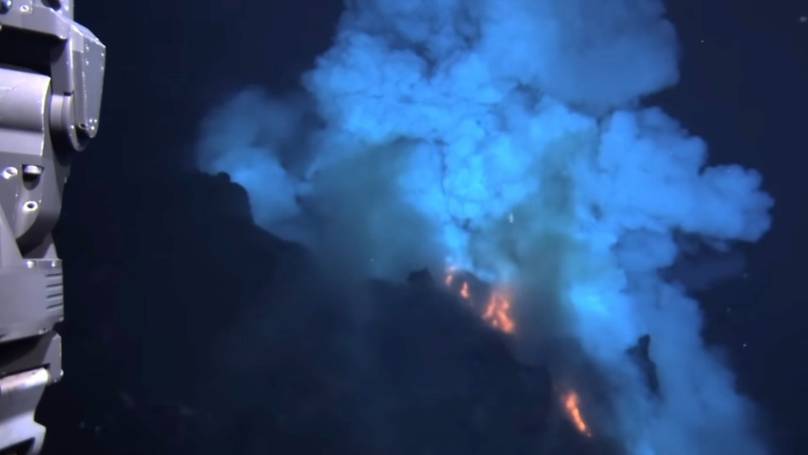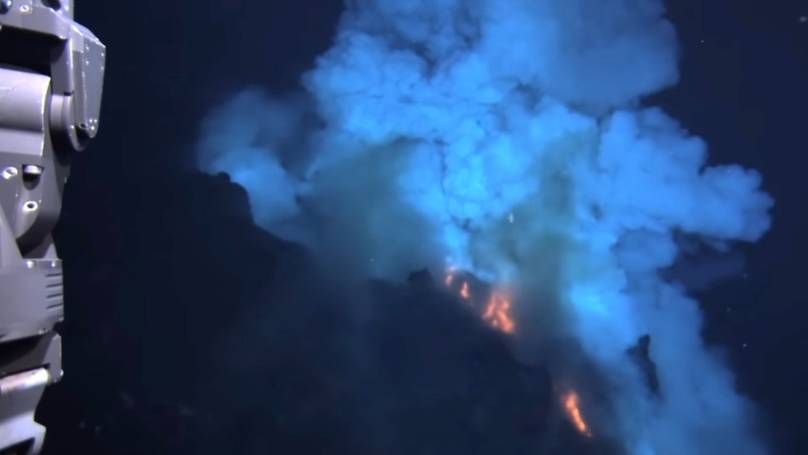Scientists Capture Unseen Fury of Underwater Volcano, Warn of Imminent Eruption at Axial Seamount
Ever wonder what happens when a giant underwater volcano decides to throw a tantrum a mile beneath the ocean’s surface? Well, the Axial Seamount — sitting pretty about 300 miles off the US coast — might just be gearing up for a spectacular show this year. Scientists have been watching this underwater beast like hawks, especially after a jaw-dropping 2,000 earthquakes rattled the area in just one day. It’s not news that this oceanic volcano has a fiery history, with eruptions in ’98, 2011, and 2015, but the looming possibility of “the big one” really gets the heart racing. The best part? Thanks to the super cool ocean water and crushing pressure down there, any eruption is more lava ballet than catastrophic explosion — so, no need to clear your beaches… yet. But hey, if things do go sideways and the volcano gets unstable, we could be talking about some serious tsunami risks. Intrigued? Curious to see underwater lava stealing the spotlight?
An alarming video shows the reality of what actually happens when an underwater volcano erupts, as experts warn Axial Seamount could be about to blow.
Scientists in the US have predicted that the volcano, which is located 300 miles away from the US coast and one mile under the ocean, could erupt sometime this year after 2,000 earthquakes were recorded in a single day.
It is currently one of the most studied volcanos in the world, with eruptions previously taking place in 1998, 2011 and most recently in 2015.
Now, experts reckon the next eruption could take place this year, according to Oregon State University geophysicist William Chadwick.
“At the rate of inflation it’s going, I expect it to erupt by the end of the year,” he wrote in a recent blog post.

Axial Seamount is a mile under water. (Susan Merle/Oregon State University)
“We had a spike of over 2,000 earthquakes in one day back in June, but since then the number of earthquakes per day has been averaging only around 100 per day.”
“Nothing seems imminent at the moment since the rate of unrest keeps wavering up and down, up and down,” the scientists added.
“Of course, we don’t really know what it will take to trigger the next eruption and exactly when that will happen.”
While the eruption isn’t expected to have any impact on those of us living on land, an old video has emerged revealing exactly what it looks like when a volcano goes off under water and it’s unsettling and impressive in equal measures.
The video, shared by Discovery on YouTube in 2009, shows lava spilling out the top of the volcano and spilling onto the sea floor creating pillow lavas and sheet flows.
Fortunately, the cool temperatures of the water means the lava cools down quickly and the pressure of the deep sea means there’s no big explosion like we’d expect to see above sea level.
The risk to human life is very minimal, as although the large caldera of the volcano is known to collapse every time there is an eruption, this is a normal reaction.
However, if the volcano was to become unstable, it could lead to a catastrophic flank collapse, which is where one of the sides of the volcano caves in on itself. This would be hugely risky as it can cause a lot of water displacement, potentially leading to a tsunami.
Fortunately, there are no signs the volcano is currently unstable so the risk of this happening is very low.




















